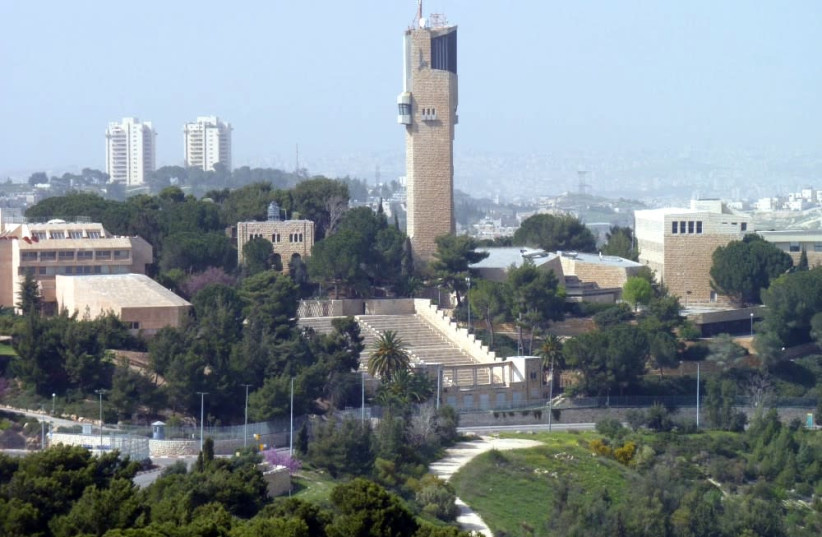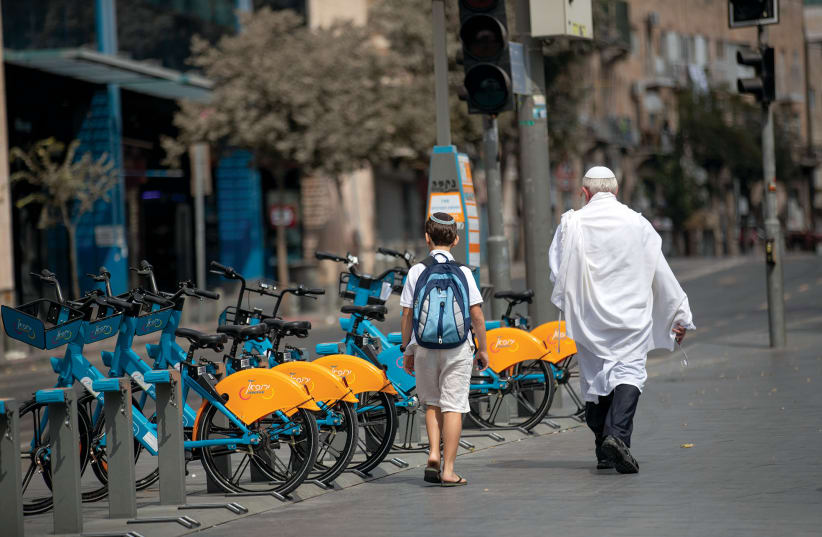Take a ride
The municipality is adding more bicycle rental points. As of this month, residents and visitors will also be able to rent at the Tisch Family Biblical Zoo, in the Talpiot, Katamonim, French Hill and Beit Hakerem neighborhoods. In total, 25 additional bicycle rental stations will be set up across the city.
Half a year after the start-up period of the project began, the Jerusalem Municipality will double the positions and place them in additional neighborhoods. Some of these rental points will operate on Shabbat – that was the major issue of disagreement between haredi representatives at the city council who refused to approve them. The solution, finally agreed upon, was to designate a few such points to operate on Shabbat, located in secular neighborhoods far from religious areas. The location of these final stations that will operate on Shabbat will be determined soon. By the end, about 200 pairs of bicycles will be offered to residents and visitors. In the next phase, there will be rental points in Sheikh Jarrah, Malha Mall, Musrara and Hadar Mall.
For the sake of workers
A new syndicate struggle in the city? The chairman of the Jerusalem District at the Histadrut is against the management of The Hebrew University of Jerusalem (HUJI). According to Dany Bonfil, the powerful chairman of the Jerusalem district of the Histadrut labor federation, HUJI president Prof. Cohen appointed his assistant senior without holding a tendering process. Bonfil has instructed the management at the university to cut off contact with the new incumbent, Dvir Reches.

On behalf of Cohen, the university management replied that the appointment did not require the consent of the workers’ committee of the institution, a reply that was rejected by Bonfil. Accordingly, until the issue is clarified and action is taken, the Histadrut has instructed university employees not to accept any instructions from the management, not to take part in meetings or work meetings initiated by the institution, not to accept the appointment and to sever contact with the new incumbent.
Sources at the Histadrut indicated that beyond the allegations in the case in question, there are more general allegations against the conduct of the university administration. As well, in recent times a comprehensive reorganization process has been carried out at the university, without the participation of the workers’ committee.
No pasarán
Are the old days of gender segregation coming back to the Geula and Mea She’arim neighborhoods? Judging by some new signboards posted in the neighborhood, at least it seems that some are planning to do so. Three years have passed since such signs were forbidden and removed by the municipality, and residents have informed that they are back. They have been spotted inside Geula, near the Har Zvi synagogue, known as a stronghold of the extremist groups of the neighborhood. The signs forbid women from crossing or staying on the same sidewalk with men, asking passersby outside the synagogue to walk on separate sides of the streets. The signs were posted in the vicinity of one of the most extremist groups in the neighborhood, the Kahal Prushim seminary, whose members hold anti-Zionist views, do not vote in Knesset elections, send their children to educational institutions that do not receive budgets from the Education Ministry and only teach in Yiddish. This is not the first time that Kahal Prushim has posted these signs, the last time was in 2019 and the signs were removed by the municipality.
A fountain controversy
On whose authority is it to decide where to install an ornament in the capital? Is it the municipality’s prerogative or should such things be decided together with the residents? At least, regarding the recent decision of Safra Square to install a large fountain in the prestigious neighborhood of Talbieh, it seems that the municipality and the residents have totally opposing views. About 500 Jerusalem residents, largely residents of Talbieh and the surrounding areas, signed a petition declaring that it is wrong to destroy the Salameh (Wingate Square) and to build this planned fountain instead. According to them, its construction is contrary to the historical, aesthetic and cultural values of the area and of Jerusalem. “The municipality is about to make the historic mistake made in Tel Aviv,” said Prof. Itai Fishhendler, who initiated the petition.
Presently at the location, there is a unique metal statue of an olive tree with a message of peace and the intention to transform the square and build a large fountain on the site alongside the development and environmental upgrade of the entire street, at the cost of about NIS 6.5 million. The opponents to the project argue that the existing condition in the square is optimal, with the existing sculpture there, and add that there is no need to demolish the square and invest millions in a place that does not require investment of this magnitude. A spokesman for the municipality said that the Wingate Square is one of the most important squares in the city and is of national importance in its location at the gate of President Avenue next to the President’s Residence. The upgrade of the square is being examined by the professional bodies in the municipality.
Elections now
After two rounds of elections, which took place in the past two years in local councils in the city, the third and last round is expected to take place in early April. These elections for new boards will complete the elections of all the neighborhoods in the city. Besides the neighborhoods of Gilo, Ir Ganim, Lev Ha’ir, Bukharan, Ramat Shlomo, Meitarim, French Hill, Beit David, A-Tor and Ramot, it is important to note that for the first time in more than twenty-five years, there will be elections in Ramot, as well. This large neighborhood, which holds more than 40,000 residents, has been at the heart of a conflict between haredi and pluralists residents. The haredim required a general election for the whole neighborhood, haredi and secular parts together, while the non-haredim managed, year after year, to prevent what they feared would seal the fate of the neighborhood as a totally haredi one.
The community administrations are the only Jerusalem platform of its kind for managing the life of the community and society in the neighborhoods. They are scattered throughout Jerusalem and serve as a complementary urban tool for managing the city and strengthening the connection between the municipality and the residents.
Expensive prayer
The Jerusalem Magistrate’s Court upheld a ruling on a compromise settlement signed between three Jewish young women and Israel, in which it was agreed that the state would compensate the three NIS 40,000. The reason was the three women could prove that they were not praying while on a visit at the Temple Mount, which is an illegal act. The three women proved that they were arrested in vain on the Temple Mount on suspicion of praying and now, they have been compensated.
From Haifa to Jerusalem
WIZO Haifa Academy of Design and Education students have been involved in planning urban renewal for the ultra-Orthodox Shmuel Hanavi neighborhood. In such a haredi enclave, they envisioned a crowded space at high density with enclosed balconies, a congestion of baby strollers at the entrances to buildings and a shortage of open public areas, keeping in mind the acute need for housing.
One project tried to create an inverted city, where the lower floors of a building will be used for residence and the upper for employment; thus, the problem of going up the stairs on Shabbat is solved.
Another attempt was to design a flexible apartment to meet the needs of a family with many children, by controlling the housing expansions that will take place in the future, or how to plan a public space for dating, while maintaining modesty and even to create a special open space for dating.
